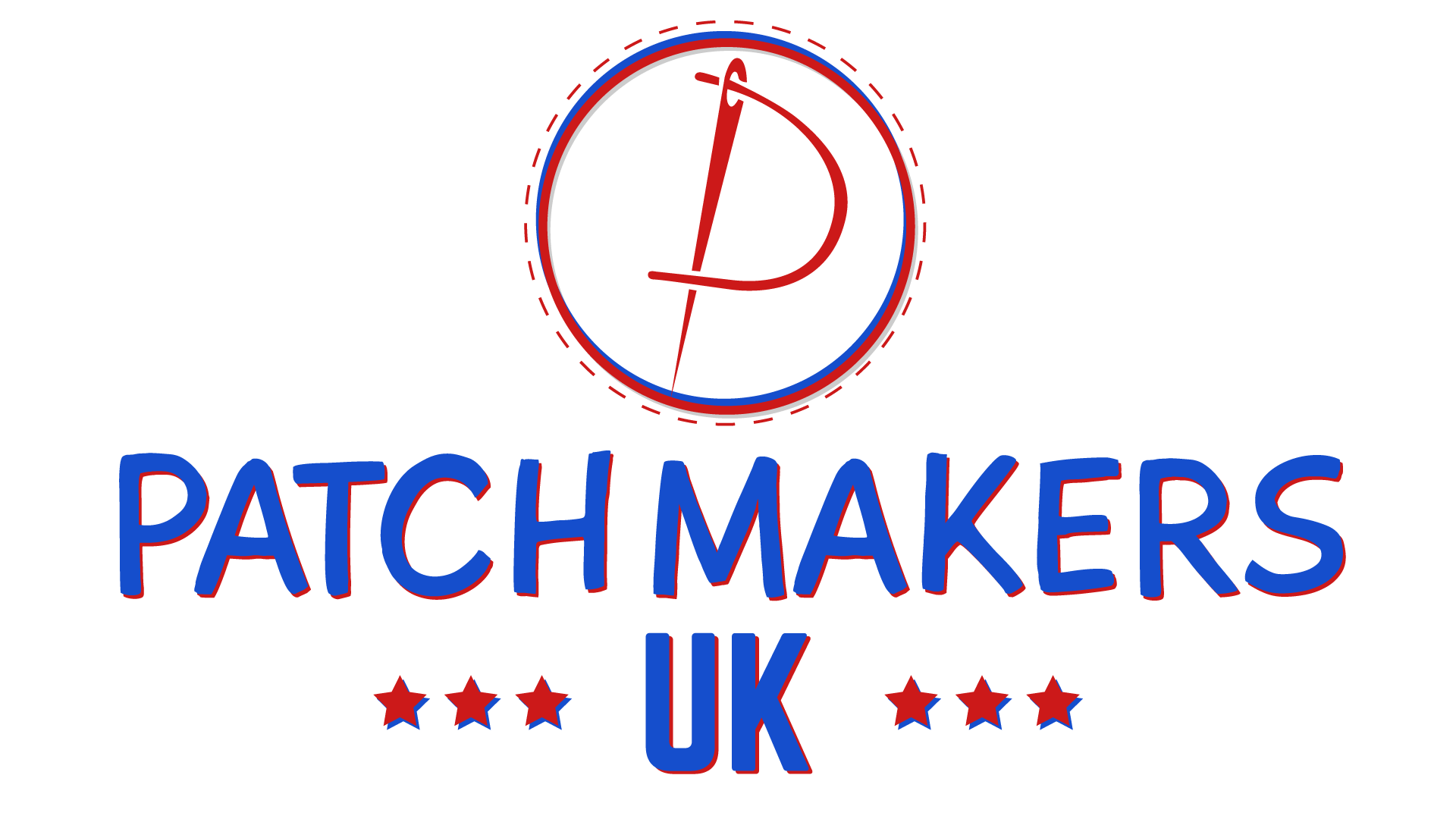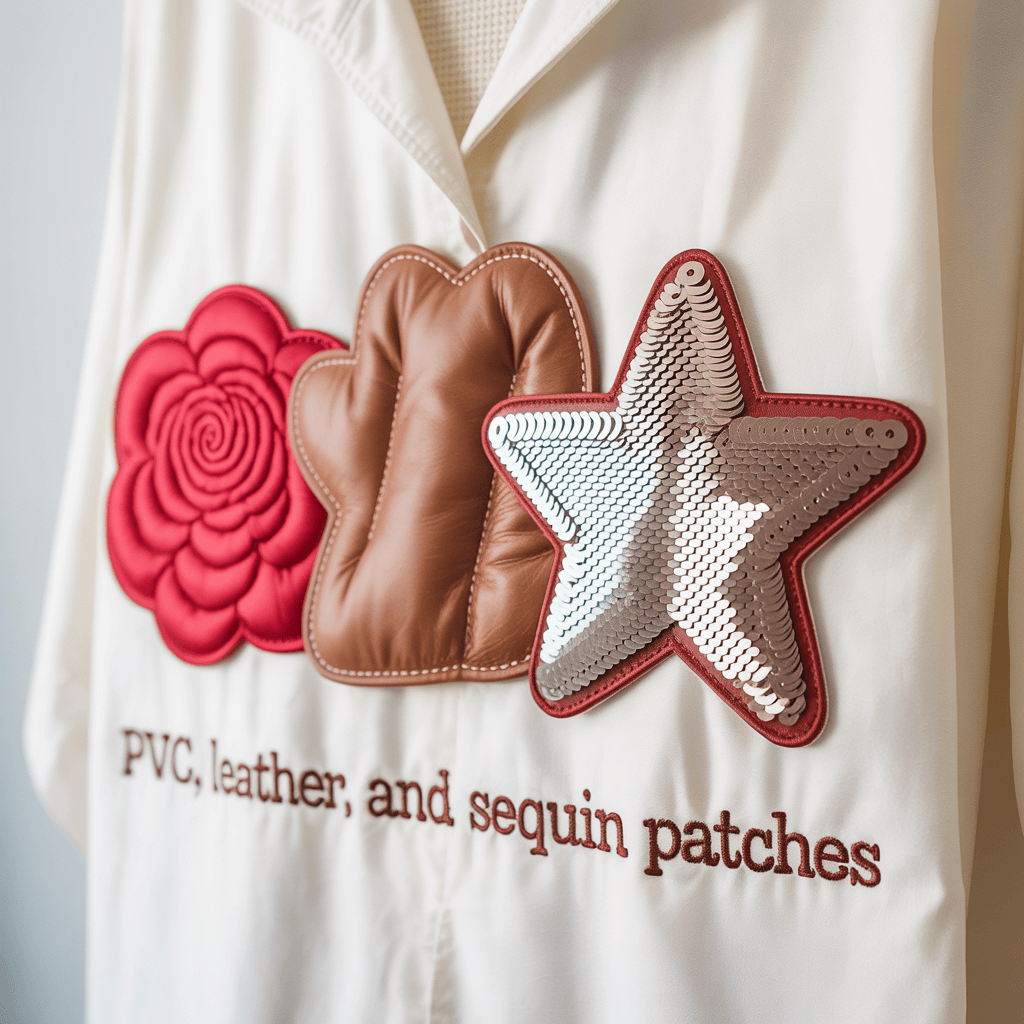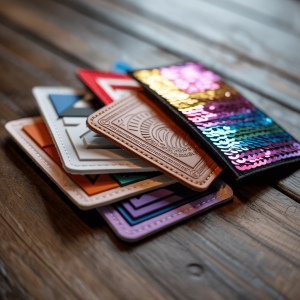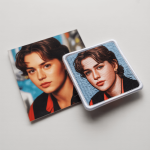Iron-on patches are convenient, quick, and reliable, until they’re not. Some patch types simply don’t play nice with heat. Take PVC patches: those vibrant, rubbery beauties can warp, melt, or lose definition when exposed to high temperatures.
Leather patches? Hit them with an iron and you’ll end up with burn marks that scream DIY disaster rather than chic craftsmanship. And sequin patches? Try ironing those, and you’ll likely end up with a sparkly puddle of glue instead of a dazzling accessory.
So, if the trusty iron isn’t in your arsenal, what’s the play? Thankfully, there are multiple professional-grade (and DIY-friendly) ways to secure these specialty patches onto your gear. From sewing and Velcro backing to adhesive options, it’s all about knowing your materials, your tools, and your style goals.
PVC Patches: Stronger Than Heat, Built for Flexibility
PVC patches are bold, colourful, and practically indestructible, which makes them the go-to choice for outdoor gear, military uniforms, and sports kits. But because they’re crafted from soft rubber-like material, ironing is off-limits.
Best Methods to Attach PVC Patches
- Stitching Around the Edge
A good old-fashioned needle and thread (or a machine) does wonders. PVC patches are flexible enough to bend slightly, allowing a clean stitch around the edge without cracking. Pro tip: use a heavy-duty thread for uniforms or gear that takes a beating. - Velcro Backing
Want versatility? Velcro lets you attach and remove patches at will. Ideal for custom military patches in the UK, biker jackets, or corporate uniforms where swapping branding elements is key. - Adhesive Backing
Some patch makers provide a strong adhesive option for PVC patches. While not as permanent as stitching, this is great for short-term promotional events or casual wear.
Related read: Choose The Right Backing For Your Custom Patch to decide whether Velcro, adhesive, or sew-on fits your needs.
Leather Patches: When Sophistication Needs Security
Leather patches are the crown jewel of branding, luxurious, durable, and perfect for custom logo patches for hats, jackets, and even corporate workwear. But iron-on? Not a chance. Heat can discolour, crack, or shrink leather.
Best Methods to Attach Leather Patches
- Saddle Stitching (Hand-Sew)
This traditional method gives leather patches a polished, handcrafted look. It’s strong, decorative, and ideal for high-end garments like bomber jackets or branded bags. - Sew-On with Machine
For bulk uniforms or large runs, machine-sewn leather patches offer consistency and speed without sacrificing durability. - Snap-On or Rivet Style
Some fashion-forward brands prefer rivets or snaps to fix leather patches. It adds an industrial edge while avoiding the risks of adhesives or heat.
Leather is an investment, whether you’re branding small-batch merchandise or decking out custom employee name patches for workwear, the right application ensures it stays premium.
Sequin Patches: Keep the Sparkle Without the Sizzle
Sequin patches are the life of the party, literally. From festival outfits and custom patches for events to promotional merch and youth fashion, sequins are designed to shine. But put them under a hot iron, and that shine fades fast.
Best Methods to Attach Sequin Patches
- Hand-Sewing
Small stitches around the border keep sequins firmly in place. Done right, it’s virtually invisible, preserving the bling factor. - Fabric Glue
Industrial-grade fabric adhesive works wonders for sequins on light-use clothing or decorative items. Just don’t expect it to last through heavy washing or rough use. - Hybrid Approach
Stitch the outline for durability and add a dab of adhesive in the middle for extra stability. Perfect for sequins on dance uniforms or custom patches for festivals where movement is constant.
Advanced Tips for Attaching PVC, Leather, and Sequin Patches
Once you know the basics, it’s time to step up your patch game. Attaching specialty patches isn’t just about durability, it’s about presentation. Whether you’re branding a corporate uniform, decking out a biker jacket, or creating custom patches for Christmas merch drops, the details make all the difference.
Use Reinforcement for Heavy Fabrics
Got a bomber jacket, a rucksack, or a pair of denim jeans? These thicker fabrics can handle and often need reinforcement. Adding a stabilizer behind the fabric ensures your stitching doesn’t pucker and keeps the patch sitting flat. Especially important for custom PVC patches that tend to be heavier than embroidered or woven designs.
Double-Stitch for High-Traffic Areas
If your patch is going on workwear or sports uniforms, don’t settle for a single pass of stitches. A double-stitch technique adds strength, ensuring your custom team patches for sports uniforms don’t start peeling mid-season.
Keep Aesthetic in Mind
A functional stitch is good. A decorative stitch? Even better. For leather patches on jackets or bags, contrast stitching can add a bespoke, fashion-forward vibe that doubles as branding.
PVC vs. Leather vs. Sequin: Which Patch Belongs Where?
Every patch type comes with a personality. Picking the right attachment method means matching the patch’s nature with its lifestyle.
- PVC Patches: Waterproof, tough, and perfect for outdoor or tactical gear. These are the custom military patches UK squads swear by.
- Leather Patches: Luxury vibes all the way. Think corporate logo patches UK made, school mascot patches, or high-end custom logo patches for jackets.
- Sequin Patches: Built for sparkle and attention. You’ll find these dominating at festivals, Easter promotions, or holiday campaigns like custom patches for Christmas or Thanksgiving.
If you’re not sure which style fits your project, check out our full UK#1 Guide to Custom Patch Sizes, Types, Colours, Borders & Backings. It’ll walk you through not only the patch materials but also the best ways to style and attach them.
Maintenance: Keeping Attached Patches Looking Sharp
Once you’ve secured your patch, the work isn’t over. Maintenance plays a huge role in keeping patches sharp and intact.
- Washing Guidelines
- Sewn-on patches can withstand machine washes, but turn garments inside out for longevity.
- Avoid tumble drying sequin patches, they’ll lose their sparkle faster than a holiday light bulb.
- Storage Tips
Jackets or uniforms with leather patches? Store them away from direct sunlight to prevent fading or drying. - Quick Fixes
If a corner starts to lift on your PVC patch, don’t panic. A simple hand stitch can extend its life until you’re ready for a professional reattachment.
With these small steps, your custom embroidered patches for hoodies, biker patches for jackets, and even club member’s patches will last years.
When Choosing the Method, Think About Use Case
Not all patches need the same level of commitment. If you’re branding bulk custom patches for uniforms, sewing is your friend. If you’re supplying promotional patches for brand marketing at an event, adhesives or Velcro might suffice.
For personal items like custom hat patches or patches for hoodies, think about how often they’ll be worn, washed, and flexed. In short: the patch material dictates the method, but so does the lifestyle of the person wearing it.
Why Professional Help Matters
Sure, DIY is fun but if you’re working with premium materials like leather or PVC, one mistake can ruin a batch. That’s why many businesses turn to the best patch makers in the UK, who provide ready-made solutions like Velcro or sew-on backings that save time and headaches.
Whether you’re a small business ordering promotional patches or a club needing embroidered add-ons, working with a custom patch maker near me ensures your patches not only look good but stay put, no matter the backing method.
FAQs
Q1. Can you iron on PVC patches?
No, PVC patches can’t handle the heat of an iron. The best alternatives are sewing, Velcro, or adhesive backings depending on the usage.
Q2. What is the best way to attach leather patches to clothes?
Sewing is the most durable method for attaching leather patches to clothes, especially on jackets, hats, and workwear.
Q3. How do you apply sequin patches without ironing?
Sequin patches are delicate, so sewing or fabric adhesive works best. Avoid ironing as it can melt or damage the sequins.
Q4. Are Velcro patches a good option for PVC or leather patches?
Yes, Velcro is ideal for PVC and leather patches when you want them to be removable or interchangeable, such as for uniforms or tactical gear.
Q5. What’s the most durable attachment method for heavy patches?
For heavy patches like PVC or leather, reinforced stitching or hybrid sew-and-adhesive methods are the most durable options.
Q6. Where can I order custom PVC, leather, or sequin patches in the UK?
You can order premium custom patches with fast turnaround at Patch Makers UK, the UK’s #1 custom patch manufacturer.
Attaching Patches = Attaching Value
Whether you’re a small business, a fashion brand, or part of a club or team, the way you attach patches sends a message. Do it right, and your patches become more than decoration, they become brand ambassadors, conversation starters, and loyalty drivers.
So next time you need custom PVC patches, custom leather patches, or sequin patches that shine brighter than your marketing team’s coffee-fueled ideas, remember: the iron isn’t your only tool.
Instead, let’s stitch your brand into the spotlight. Ready to get started? Contact Patch Makers UK today to design your own patch and order with the right backing, premium quality, and fast turnaround. Because when it comes to attaching patches, you don’t just want them stuck, you want them to stay.







